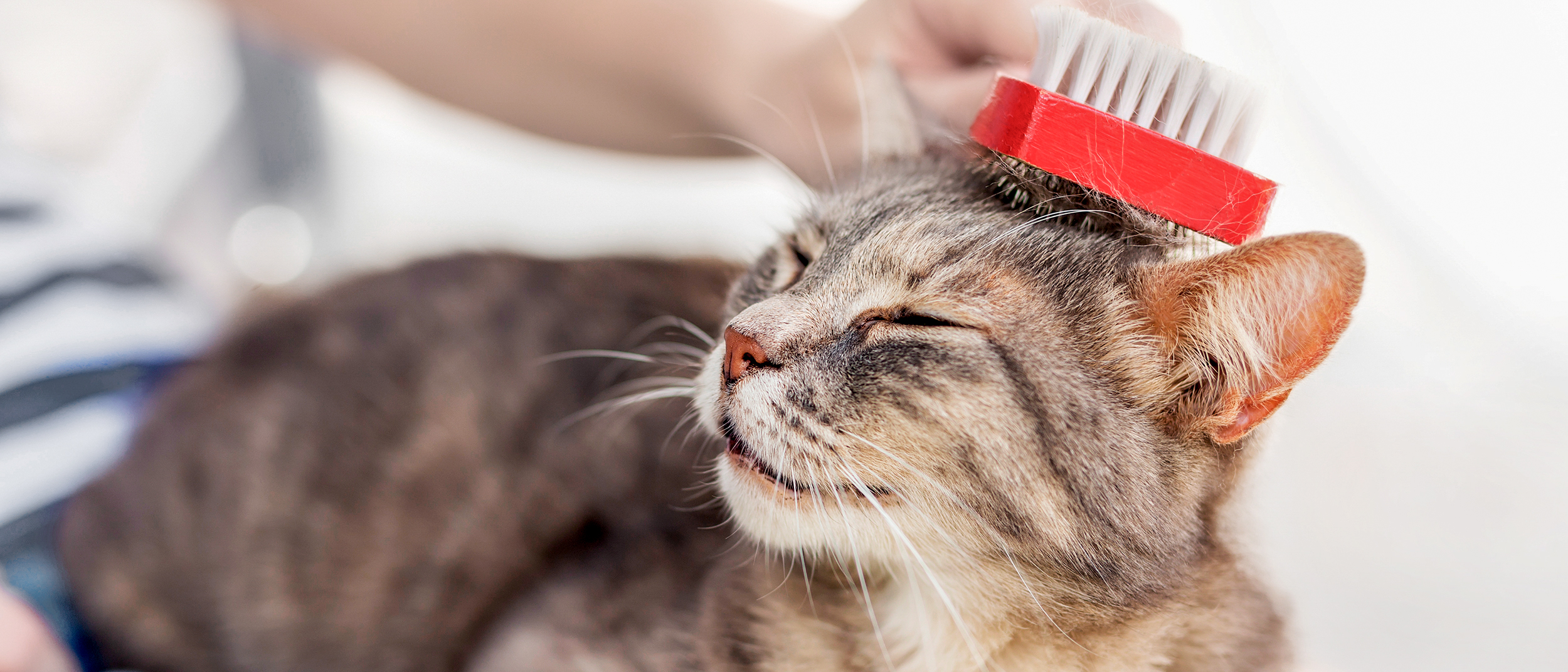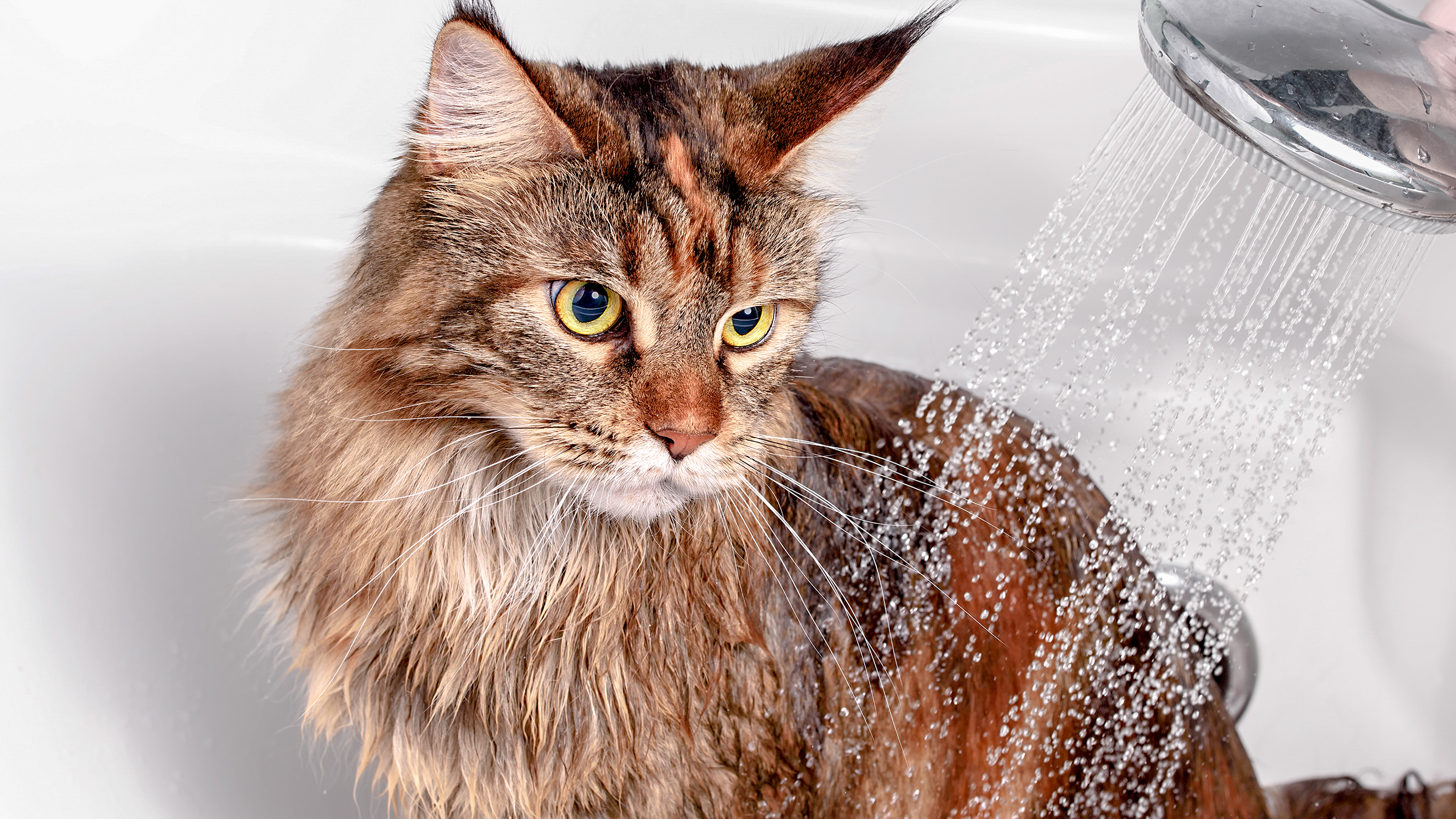Hygiene and grooming tips for your kitten

Kittens spend a lot of their waking hours grooming themselves, but as an owner, you too have responsibilities and a role to play when it comes to the grooming and hygiene of your kitten.
Caring for your kitten in this way will not only support your pet's health and wellbeing, it will also help you to bond.
Maintaining your kitten’s coat
Brushing your kitten regularly gives you the opportunity to check for parasites such as fleas and ticks, and helps to prevent hairballs which can build up in the stomach.
How to brush a kitten's fur
- Start off very gently so your cat gets used to being brushed or combed.
- Always comb your kitten with and then against the direction of growth to gently remove loose hairs and any tiny knots.
- If a knot resists, be gentle and patient rather than pulling hard and damaging the fur.
- It is recommended to end your grooming session with a game so it finishes in a positive way for your kitten.
- In spring and summer, moulting seasons, more regular and careful brushing is required. Use a rubber massage mitt then comb to free any loose hair more easily.
How to groom short-haired cats
Weekly brushing is enough for short-haired cats. Before brushing, you can massage the fur against the direction of hair growth with a grooming glove to remove loose hairs and tone the skin. Use a soft brush, if possible, with natural silk bristles, to avoid damaging the fur.
How to groom mid-length haired and Persian cats
A few minutes of brushing every day will avoid knots and remove dirt. A large toothed metal comb is best for this. Care should be taken with combs as they go deeper into the fur than brushes, this means there's a greater risk of irritating the skin, so be sure to take time choosing a good comb.
How to clip a kitten’s claws
Kittens use their claws to mark their territory. To avoid damage caused by scratching, without affecting their natural behaviour, it is best to clip their claws. Claw clipping is completely painless but can cause your kitten distress so it’s important to start early so they can get used to the process from a young age.
- Ask your vet - Before you begin clipping your cat’s claws you should ask your vet to explain which part of the nail you can cut without causing pain and bleeding.
- Make sure you and your cat are comfortable - Begin by choosing a comfortable place to sit and place your kitten on your lap, holding its body between your thighs. Between clips you should soothe your kitten by caressing its belly.
- Guillotine clippers are the best tools for trimming claws - Cut the white tip of the claw, staying well away from the end of the pink triangle, which is the fleshy part at the base of the claw (the quick). If you clip too close to the quick, you risk causing distress and bleeding.
- Take your time - It's best to cut a small amount several times rather than to make a big cut.
A kitten’s claws are a good indicator of their health. Claws that are too hard or too soft are signs of possible malnutrition or bacterial attack, so if you notice either of these signs, consult your vet.

How to clean a kitten’s face
- Cleaning your kitten’s eyes - Some cats, those with flat faces for example, secrete tears that may leave marks under the eye. You can clean the fur with a pharmaceutical compress soaked in eye lotion, wiping from the inside of the eyelid towards the outside.
- Cleaning your kitten’s nose - A healthy kitten’s nose should always be damp and clean. Some cats have nasal secretions in the corners of their nostrils. You can easily remove such secretions with a compress or with tissues and warm water.
- Cleaning your kitten’s ears - Your kitten’s ears should be examined regularly. If they are dirty, simply drizzle a little ear solution inside and massage the outer ear.
Consult your vet for a diagnosis if you notice any secretions or discharge, as they will be able to recommend an appropriate treatment.
Looking after your kitten’s oral hygiene
Your kitten’s milk teeth will begin to appear when they are between two and six weeks old. It’s important that you maintain your kitten’s oral hygiene as poor hygiene can lead to tooth loss, inflamed gums and bad breath.
- Brushing your kitten's teeth - Using a special cat toothbrush and veterinary toothpaste is recommended. To get your kitten familiar with having their teeth brushed, start from a young age and with practice and perseverance they will quickly get used to it.
- Avoiding tartar build-up - Choose anti-tartar dry food, as it has a particular texture and contains substances that trap the calcium in the saliva, slowing the formation of tartar.
If you have any concerns about the condition of your kitten's teeth then speak to your vet who will advise you and may de-scale their teeth using an ultrasound machine.
How to bath a kitten
Very few cats are attracted to water but bathing remains an important part of the grooming and hygiene routine for mid-length and long haired cats, so it's a good idea to familiarise your kitten with bathing from an early age.
1. Get your cat acquainted with water, remembering to be gentle but firm
2. Wet them with a sponge to start with. If your kitten reacts with hostility, stop and try again a few days later until they accept the water
3. Wash the fur gently, focussing on any dirty areas
4. Fill the bottom of your bath with water of 36-37°C and place your kitten gently inside
5. Offer reassurance with gentle words and stroking
6. Wrap your kitten in a clean, warm towel. You can use a hair dryer to dry the fur completely, however, make sure you use it gently, the air is not too hot and you’re not too close.
Grooming your kitten is a great way to bond with your new pet, whilst also taking care of their health and wellbeing. It also helps you to become familiar with your cat's skin, eyes, ears, teeth and coat, so that you are able to identify anything out of the ordinary. If you do notice any sudden changes or abnormalities, consult a vet for professional advice and treatment.

Tailored nutrition for your kitten
Nutritional formulas that help to build your kitten's natural defences, support healthy growth, and aid in digestive system development.
Like & share this page